B2B SEO Strategy Guide 2021: 7 Lessons from Companies that Drive 2M+ Visits/Month
You’ve read through all of the ultimate guides and the 200+ best practices for B2B SEO, and still the question lingers: what does a winning B2B SEO strategy look like in practice?
Without a north star to guide you, it’s easy to lose your way as you navigate the complex world of B2B SEO and content marketing.
We’re going to examine seven ready-to-use B2B SEO tactics that can drive millions of website visitors and thousands of paying customers. Then, we’ll unpack what makes them successful and how you can apply those lessons to improve the SEO strategy for your B2B company.
But first, let’s answer another question that’s probably on your mind….
What is B2B SEO and why does it matter in 2021?
B2B SEO is the art of meeting a potential customer when they’re looking for your product, service, or simply researching your company or others like it. When done well, it forms the backbone of your content marketing strategy.
The process of B2B SEO begins with keyword research and identifying your
customer’s pain points.
Let’s briefly examine the three moving parts of B2B SEO:
- On-page SEO refers to optimizing your page with helpful content that sufficiently answers queries. It also includes adding relevant title tags, headings, URLs, and alt text for images.
- Off-page search engine optimization is the practice of boosting your website’s authority with quality link building.
- Technical SEO is sprucing up your website’s architecture to make it easy to find, crawl, and index.
Why invest in SEO in 2021?
Because it’s the only B2B marketing channel for which traffic compounds over time.
Consider this: the average age of a page ranking among the top 10 Google search results is 2+ years. Those pages that rank first in the SERP are almost three years old.
Which other distribution channel brings traffic for years to come?
Unsurprisingly, organic search contributes to 53.3% of website traffic across various industries. What’s more, B2B companies generate twice as much revenue from organic traffic than channels like social media and email.
Since 2009, we have helped thousands of businesses grow their online leads and sales strategically. Let us do it for you!

7 evergreen lessons to create a winning B2B SEO strategy in 2021
Take a look at how the pros approach B2B SEO strategy:
1. Think bottom-of-the-funnel keywords first
Zapier’s website gets 7 million visitors per month, over half of which is search engine traffic.
To find early customers, CEO Wade Foster looked to product support forums to find users looking for integrations.
He shares, “People would post things like ‘I love Evernote, it would be great if it worked nicely with Dropbox…’”
Once they figured out how people were searching for their product, they harvested that demand by creating three types of landing pages:
- One main landing page for each app in their ecosystem
- One for app to app integrations
- One page explaining all possible workflows with a specific app.

Zapier has over 25K such landing pages. They’re a classic example of using bottom of funnel keywords to fuel a content strategy.
Bottom of funnel content covers highly specific, long tail keywords with low search volume, but high chances of conversion.
Apply this to your B2B SEO strategy:
Zapier’s landing pages are one type of bottom of the funnel content, but it exists in other forms too:
- The Executive Guide to SaaS and Subscription Statistics (ebooks, whitepapers, and reports)
- Reforge Reviews (branded search queries)
- Ways to use Asana (use cases)
The best way to find ideas for bottom of the funnel content is to speak to your customers and identify their pain points.
Specifically, pay attention to the terms they use when describing their problem. This is what they’ll search for when they’re ready to buy your product or service.
Other ways to gauge the pain points of your target audience include jumping on sales calls and hanging out in communities, such as Quora and Reddit.
2. Create long form content for middle and top-of-funnel keywords
While bottom of funnel content helps capture prospects ready to buy, Zapier drives demand for its product with a blog.
Its long form articles contribute to one-third of it’s search traffic.
Primarily, the Zapier blog targets top of funnel and middle of funnel keywords. Along the way, it introduces the product.
Take a look at some of the topics covered:

Zapier’s blog isn’t just a vehicle to drive awareness, it drops readers right into relevant workflows they can set up with the app.
For example, this piece with Trello tips has several CTAs on using Zapier to automate tasks with Trello:
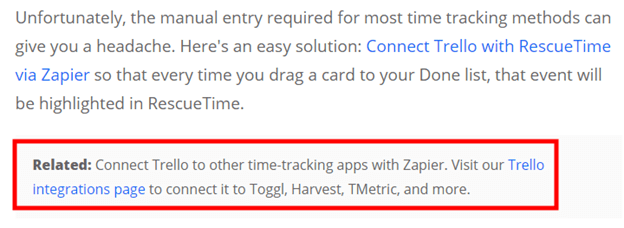
Apply this to your B2B SEO strategy:
Identify middle and top of funnel keywords for your blog using keyword research, customer feedback, and by looking at the People Also Ask boxes in the search results.
Once you have a list of potential topics, think about how relevant each keyword is to your business. This will help you tie content back to your product.
Finally, look at topics you’re in a unique position to cover through a unique perspective, data, or experience.
This approach will help you craft top of funnel content that’s unique, relevant to your brand, and brings qualified traffic.
3. Use standalone topic clusters for competitive keywords
Most top of funnel keywords are highly competitive. How do you rank for such broad terms?
Enter topic clusters, a group of interlinked pages, with one main pillar or resource page that links to all others.
The purpose of a cluster is to show Google that you’re an authority on a given topic.
The meditation app, Headspace, gets more than 2M visitors to it’s website, as of July 2020. 30% of that traffic comes from organic search.
But what is their biggest draw of traffic?
It’s a 99-page topic cluster for the keyword, “meditation.”
This single topic cluster drives 88,781 visits per month for Headspace.
Standalone topic clusters are more powerful than clustering articles on a blog. Why? They help you curate a focused path for readers, who may get distracted by links. Standalone clusters also allow for better placement of CTAs and interlinking.
Lastly, they help boost your organic search rankings, since your root domain enjoys more authority than your blog.
See how Buffer experienced a bump in search engine rankings when they used standalone clusters on their website:
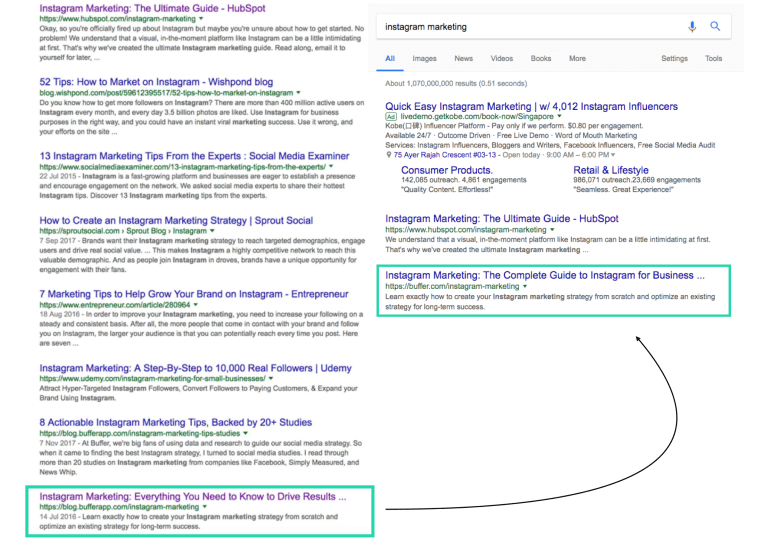
Apply this to your B2B SEO strategy:
Think of the most obvious ways to describe your B2B business. These are your most valuable keywords.
The more competitive a keyword, the better it is for creating a topic cluster.
Another factor to consider is how broad a topic is, so there’s enough meat for a cluster.
Finally, the key to succeeding with a topic cluster is smart navigation and interlinking. Take a look at how Headspace does this:
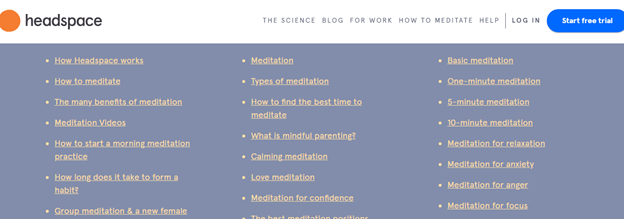
You’ll also want to place strategic CTAs for your app throughout the piece, like this:
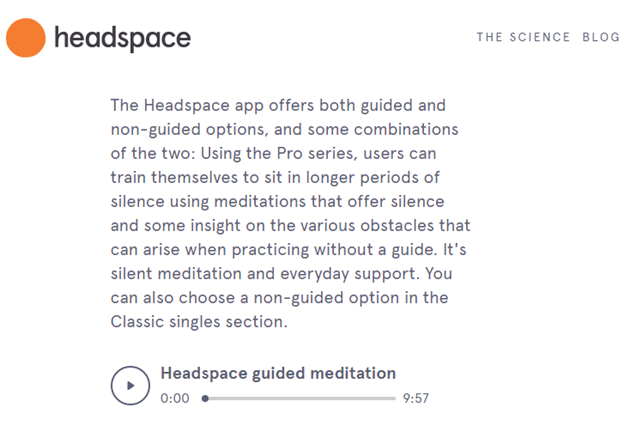
Since 2009, we have helped thousands of businesses grow their online leads and sales strategically. Let us do it for you!

4. Tap into the business potential of each keyword
We’ve covered a fair bit of ground on keyword research, but let’s address a problem most marketers face with B2B SEO: their content doesn’t convert into paying subscribers.
This example from the SEO tool Ahrefs shows how to drive real business with your content.
CMO Tim Suolo explains their strategy, “We don’t care about TOFU/MOFU/BOFU. All we care about is business potential.”
What signals high business potential? Topics where their product is almost an irreplaceable solution to a problem.
Sample some of their posts:
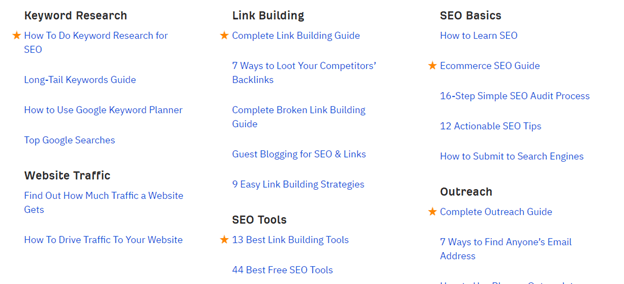
The blog has a good mix of top, middle, and bottom of funnel posts.
But each of them has something in common: While answering the reader’s query, they also cleverly introduce Ahrefs to the reader, and demonstrate how to solve their problem using the tool.
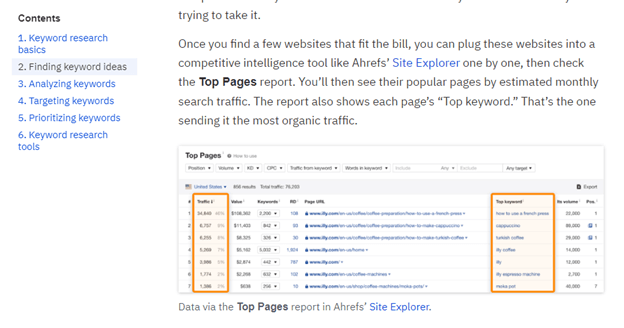
It’s not pushy or salesy, but strategic and subtle.
Apply this to your B2B SEO strategy:
When evaluating potential keywords, look for topics where you can talk about your product without appearing pushy.
Don’t be afraid to discuss your features and benefits, albeit in a non-salesy way.
If your product is a direct solution to the reader’s problem, be sure to explain how and add relevant calls to action for them to try or subscribe to your product.
5. Capitalize on competitor SEO
Competitor SEO is a great place to kickstart your B2B SEO efforts.
As Kevin Indig explains, competitor SEO helps you get in front of customers of your competitors as well as those who are actively evaluating your product and those of others.
Helpdesk software Help Scout uses two types of pages to take advantage of the highly competitive customer service software space:
Alternative pages:
Help Scout has several pages comparing it to competitors like Zendesk, Freshdesk, and Desk.com. Instead of a direct comparison, they rely on customer testimonials and features to make their case.
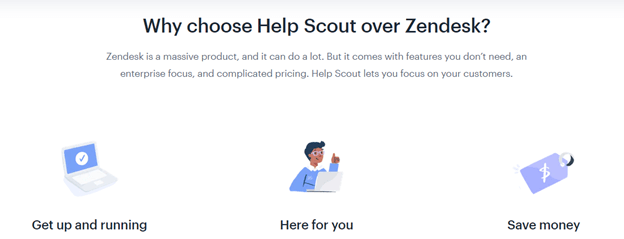
Help content and FAQs:
They use their help docs to answer questions like, “How to transfer from Zendesk to Help Scout”
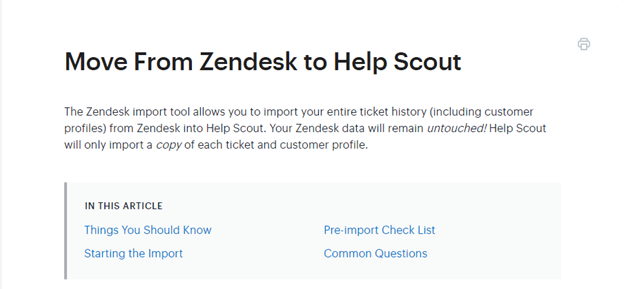
Apply this to your B2B SEO strategy:
There are three types of queries you’ll want to target when doing competitor SEO:
- Alternative queries (Zendesk alternatives)
- Versus queries (Helpscout vs. Zendesk)
- Competitor documentation
While the first two are obvious, let’s discuss the last one.
Competitor documentation presents a great opportunity to bank on existing SEO demand.
Take a look at your competitor’s product documentation, product landing pages, use case landing pages, and product videos.
Do they sufficiently answer customer questions, or are they lacking information? If it’s the latter, you’ve found your sweet spot.
Take the example of Filmora, a video editing software that went up against the industry giant, Adobe Premiere.
They noticed gaps in Adobe’s documentation and created how-to content for Premiere Pro. Along the way, they also introduced their product and explained how readers could use it to solve their problem.
6. Include video in your B2B SEO strategy
If you think B2B SEO is limited to blogging, it’s time to rethink your strategy.
Ideally, your strategy should be like that of Ahrefs: to be there for people when they’re searching for anything SEO-related.
To that end, they don’t just create blog posts, but also YouTube videos for each topic.
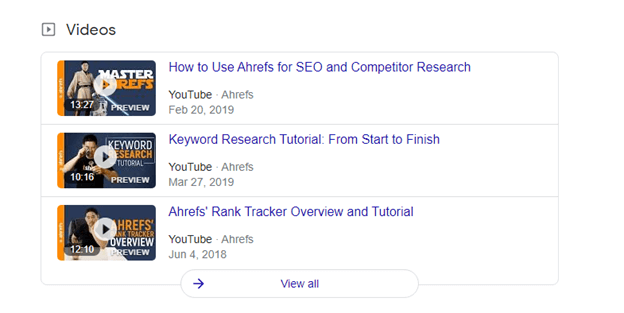
If you’re serious about SEO, ignore video at your own peril.
As Wistia discovered in an unplanned experiment, video on a webpage does affect search rankings and traffic. Specifically, having their videos indexed contributed to a 10.6% increase in organic traffic.
Video is not just good for SEO, but also conversions. As one study found, 80% marketers said video helped them directly increase sales.
Apply this to your B2B SEO strategy:
Take a look at existing search results for popular queries in your niche. Do they include videos? If so, it might be a good place to start creating videos.
You’ll also want to explore any content gaps in your niche. Maybe there aren’t enough how-to videos on your topic, or perhaps none of your competitors are investing in animated explainer videos.
For videos you already have on your website like demos, explainer videos, and customer success stories, be sure to optimize them for search.
While it’s difficult to rank in universal searches with a video, Wistia recommends some best practices for ranking in the video tab of a Google search. This includes choosing a good platform to host your videos, adding a video transcript, using the right titles and tags, and including a thumbnail image.
7. Refresh content often
A common question companies tend to ask when thinking about B2B SEO is, “how many posts do you need to succeed?”
Let’s look to Ahrefs again for the answer.
The SEO tool has been around since 2010. During this time, they’ve only published around 250 posts. That’s about 25 posts per year, or one post per two weeks.
So, where do they invest the rest of their content efforts?
They spend a lot of time refreshing old posts. CMO Tim says, “Once we notice that a post is losing traffic, it’s a sign that we need to refresh it. Or even if the post is doing super well, but we feel it has some outdated info, we go and fix it.”
This helps their blog stay relevant, even as the world of SEO changes regularly.
Over time, all content loses traffic. This happens due to algorithm changes and the fact that search engines are constantly looking for the most thorough and up-to-date pieces of content for any given query.
Refreshing content is the best way to keep your best posts from losing traffic and avoid content decay.
Apply this to your B2B SEO strategy:
Don’t think you need to churn out new content each week to have a successful blog. Instead, spend time refreshing old pieces that may be losing traffic.
It’s not only cost effective, but also helps your blog stay current.
A content audit every month should help you identify pieces that need an update. This guide from BuzzSumo provides a helpful checklist to create a content audit and refresh older content.
Your B2B SEO strategy exists for a reason
Building a B2B website with over 2M visitors is no simple feat. But traffic alone isn’t the goal of B2B SEO, as the examples discussed above show.
You want to attract relevant traffic to your website with a high chance of converting into paid customers.
Bottom of funnel keywords, competitor SEO, and evaluating business potential of keywords are great ways to make sure your content strategy is aligned with business goals.
Use top and middle of funnel keywords and videos to boost your SEO performance and traffic. Where possible, be sure to insert relevant calls to action for your product too.
Finally, to get the most bang for your buck, spend some time refreshing content. Your readers and search engines will thank you for it.
Since 2009, we have helped thousands of businesses grow their online leads and sales strategically. Let us do it for you!

